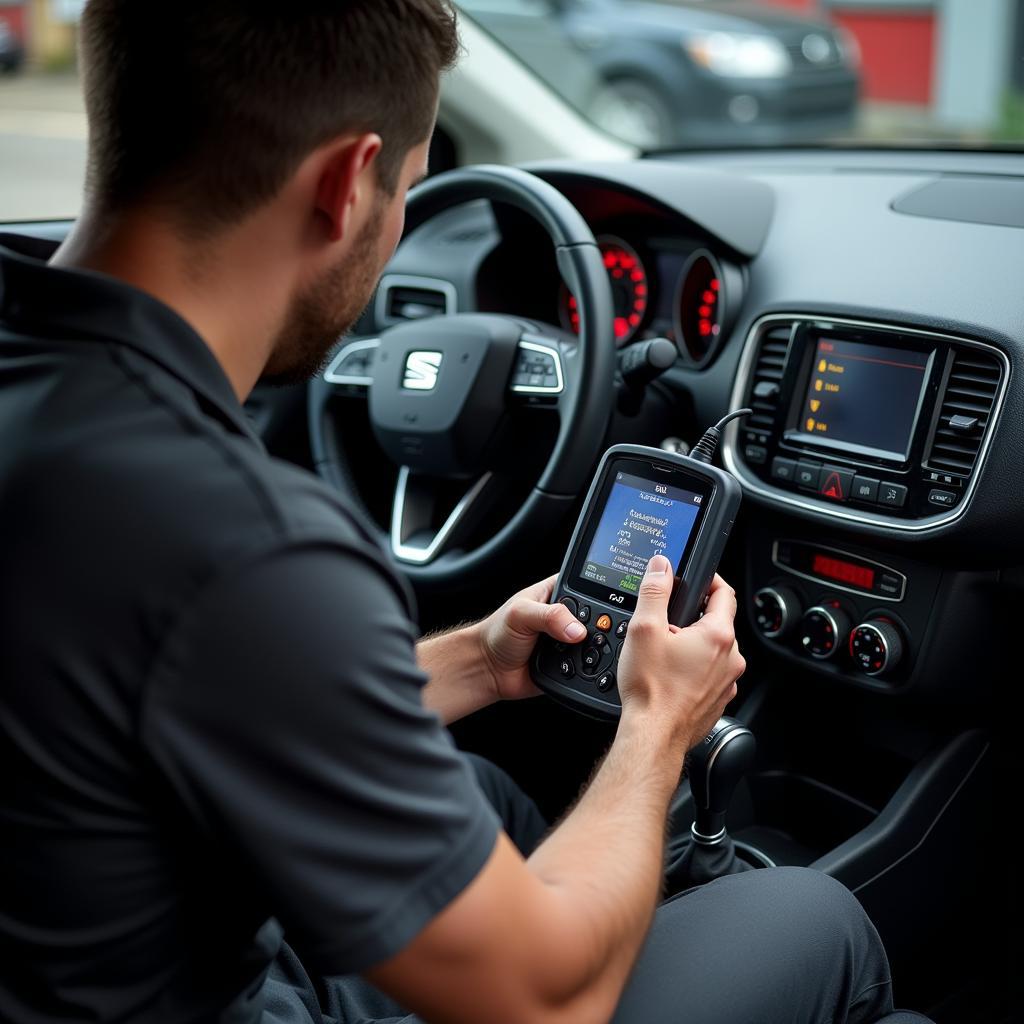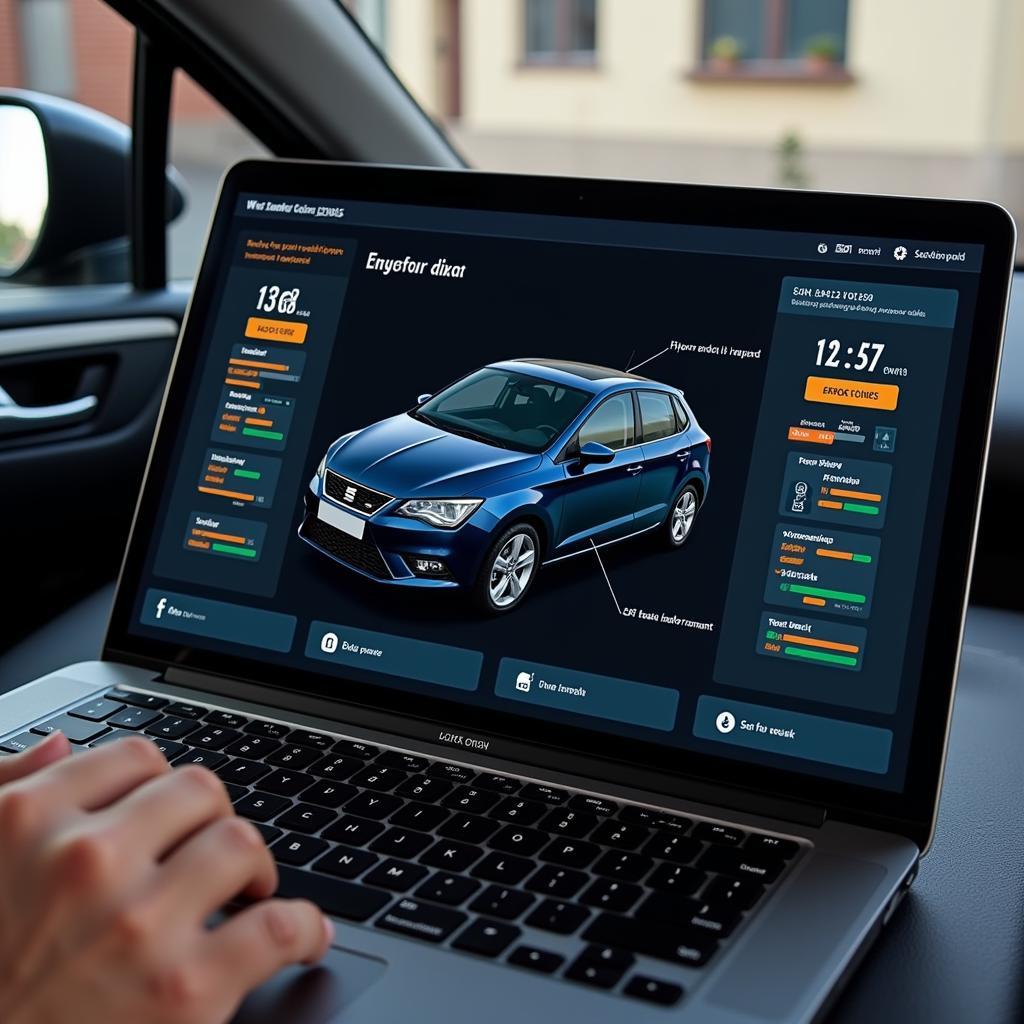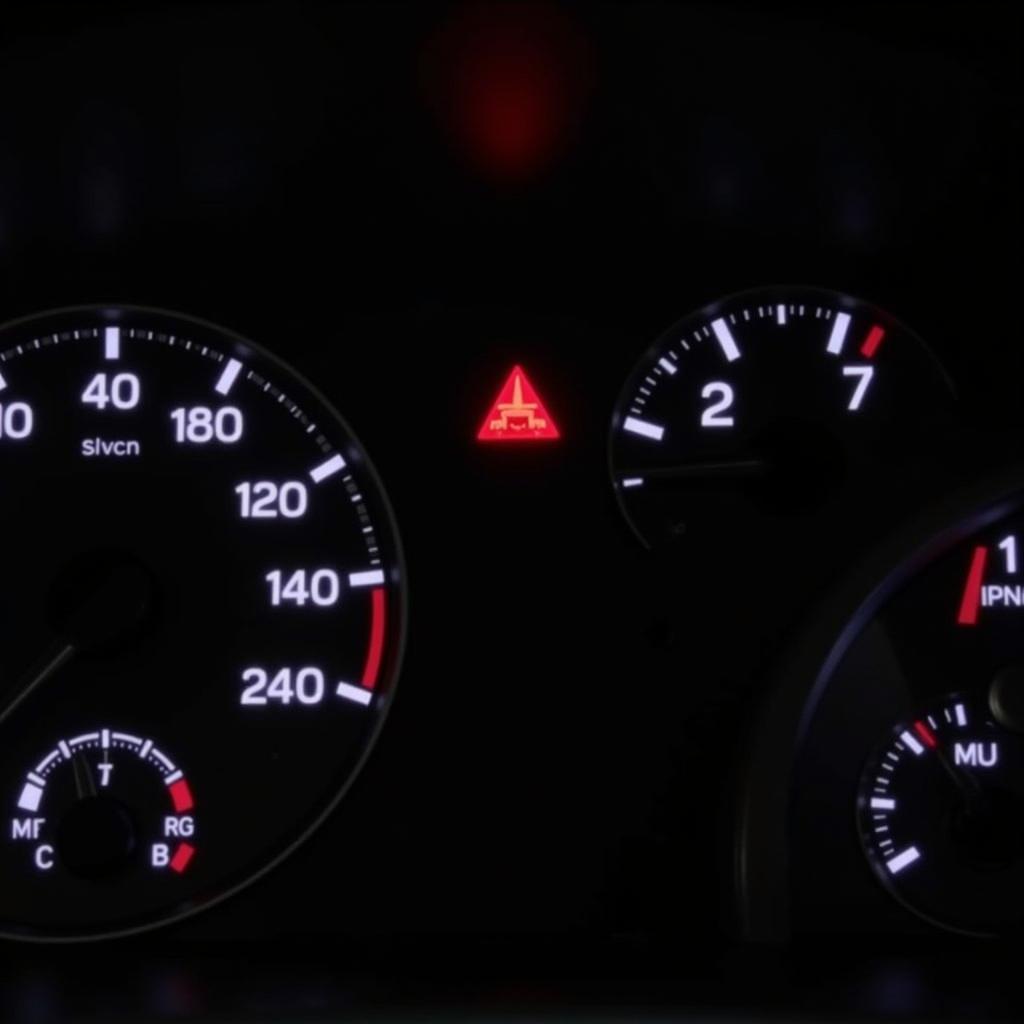The exclamation mark warning light on your Seat Ibiza dashboard can be a cause for concern. This often-overlooked symbol plays a crucial role in communicating potential issues with your vehicle. Understanding its meaning can save you time, money, and potential headaches down the road.
This comprehensive guide delves into the various reasons behind the Seat Ibiza exclamation mark warning light, empowering you with the knowledge to address the situation effectively.
Deciphering the Exclamation Mark: What it Indicates
The exclamation mark warning light is a critical safety feature, alerting you to potential malfunctions within various systems of your Seat Ibiza. Unlike more specific warning lights, the exclamation mark points to a broader range of issues, requiring further investigation to pinpoint the exact cause.
Common Culprits Behind the Warning Light
Several factors can trigger the exclamation mark warning light on your Seat Ibiza. Here are some of the most frequent culprits:
- Brake System Issues: One of the most common reasons for the exclamation mark warning light is a problem within the brake system. This could include:
- Low brake fluid level
- Worn brake pads
- Malfunctioning brake sensors
- Issues with the Anti-lock Braking System (ABS)
- Tire Pressure Monitoring System (TPMS) Fault: A malfunctioning or triggered TPMS, indicating low tire pressure, can also activate the warning light.
- Electronic Stability Control (ESC) Problem: The ESC system ensures vehicle stability during cornering and slippery conditions. A fault within this system can trigger the warning light.
- Power Steering Malfunction: Issues with the power steering system, either electronic or hydraulic, can illuminate the exclamation mark.
- Electrical Faults: In some cases, electrical issues such as a failing battery, faulty alternator, or wiring problems can lead to the warning light appearing.
What to Do When the Exclamation Mark Lights Up
 Mechanic performing a diagnostic check on a Seat Ibiza
Mechanic performing a diagnostic check on a Seat Ibiza
- Stay Calm and Assess the Situation: Don’t panic! Firstly, determine if the warning light is steady or flashing. A flashing light typically indicates a more critical issue requiring immediate attention.
- Check Your Surroundings: If possible, safely pull over to the side of the road or a safe location away from traffic.
- Consult Your Owner’s Manual: Your Seat Ibiza owner’s manual provides a detailed explanation of each warning light, including the exclamation mark. It can offer specific instructions based on your vehicle model and year.
- Inspect the Brakes: If you suspect a brake issue, cautiously test the brakes while driving at a low speed. If you experience any unusual noises, vibrations, or pulling to one side, it’s crucial to stop driving and seek professional assistance.
- Check Tire Pressure: Find a safe spot to stop and visually inspect your tires for any signs of damage or low pressure. Utilize a tire pressure gauge to verify the pressure matches the recommended level stated in your owner’s manual.
- Seek Professional Help: If the warning light persists or you cannot pinpoint the cause, it’s crucial to seek professional diagnosis and repair.
Remote Diagnostics and Software Solutions
 Laptop displaying remote car diagnostics for a Seat Ibiza
Laptop displaying remote car diagnostics for a Seat Ibiza
In today’s technologically advanced automotive landscape, remote diagnostics and software solutions are transforming the way car problems are addressed. As experts in this field, we offer cutting-edge remote diagnostics and programming services for Seat vehicles, including the Ibiza.
Our team of skilled technicians can remotely access your vehicle’s computer system, retrieving diagnostic trouble codes (DTCs) and analyzing sensor data to identify the root cause of the warning light. This allows for a quick and accurate diagnosis without the need for a physical visit to the workshop.
Moreover, many issues triggering the exclamation mark warning light can be resolved remotely through software updates and calibrations. Our remote programming services ensure your Seat Ibiza’s software is up-to-date, optimizing performance and addressing potential bugs that may be contributing to the warning light.
Conclusion
The exclamation mark warning light on your Seat Ibiza should never be ignored. By understanding its potential implications and taking appropriate action, you prioritize your safety and ensure the longevity of your vehicle.
While this guide provides a general overview, remember that consulting your owner’s manual and seeking professional assistance when needed are crucial steps in resolving any underlying issues. Embrace the power of remote diagnostics and software solutions for efficient and convenient troubleshooting, keeping your Seat Ibiza running smoothly.
FAQs
Q: Can I continue driving with the exclamation mark warning light on?
A: It’s not advisable to continue driving if the warning light is flashing or accompanied by unusual vehicle behavior. Safely pull over and consult your owner’s manual or seek professional assistance.
Q: How often should I check my Seat Ibiza’s tire pressure?
A: It’s recommended to check your tire pressure at least once a month and before long journeys.
Q: Can a low battery cause the exclamation mark warning light to illuminate?
A: Yes, a failing battery can disrupt the vehicle’s electrical system and potentially trigger the warning light.
Q: Are remote diagnostics and programming services expensive?
A: Remote services can often be more cost-effective than traditional repairs, as they minimize labor costs and downtime.
Q: Is it necessary to visit a Seat dealership for software updates?
A: While dealerships offer software updates, specialized services like ours provide the same updates remotely at your convenience.

